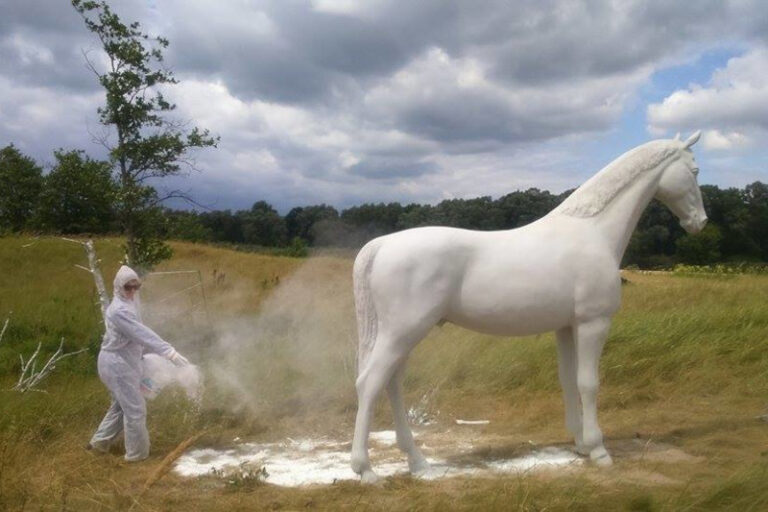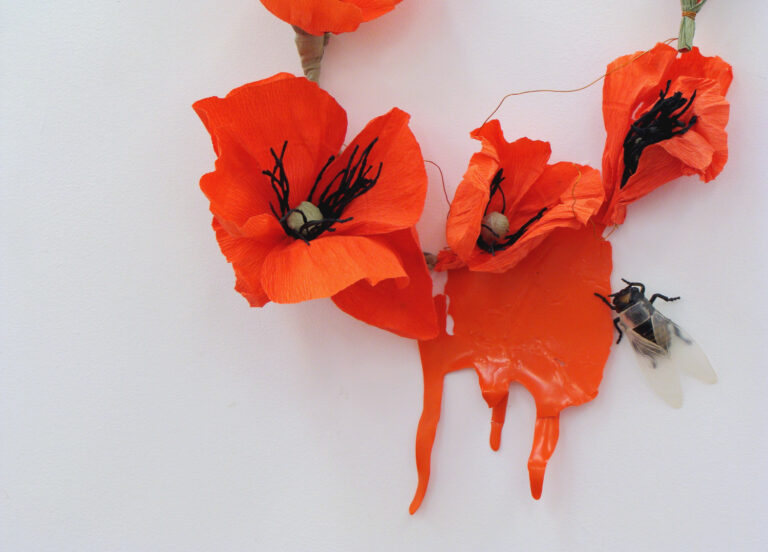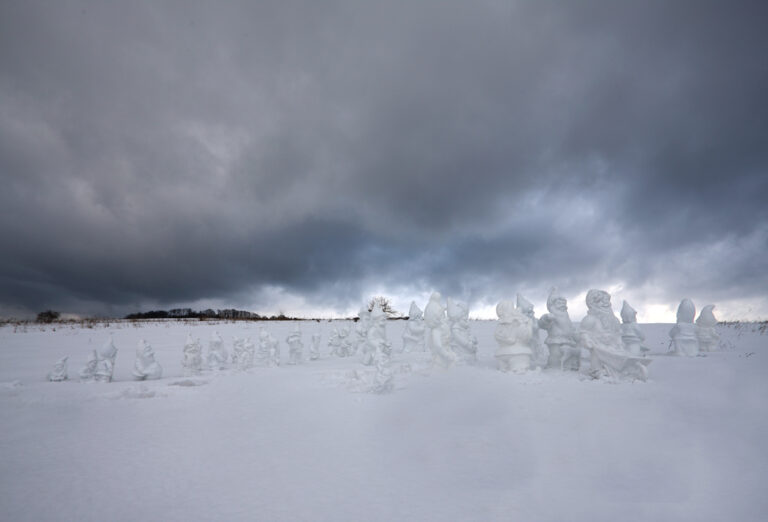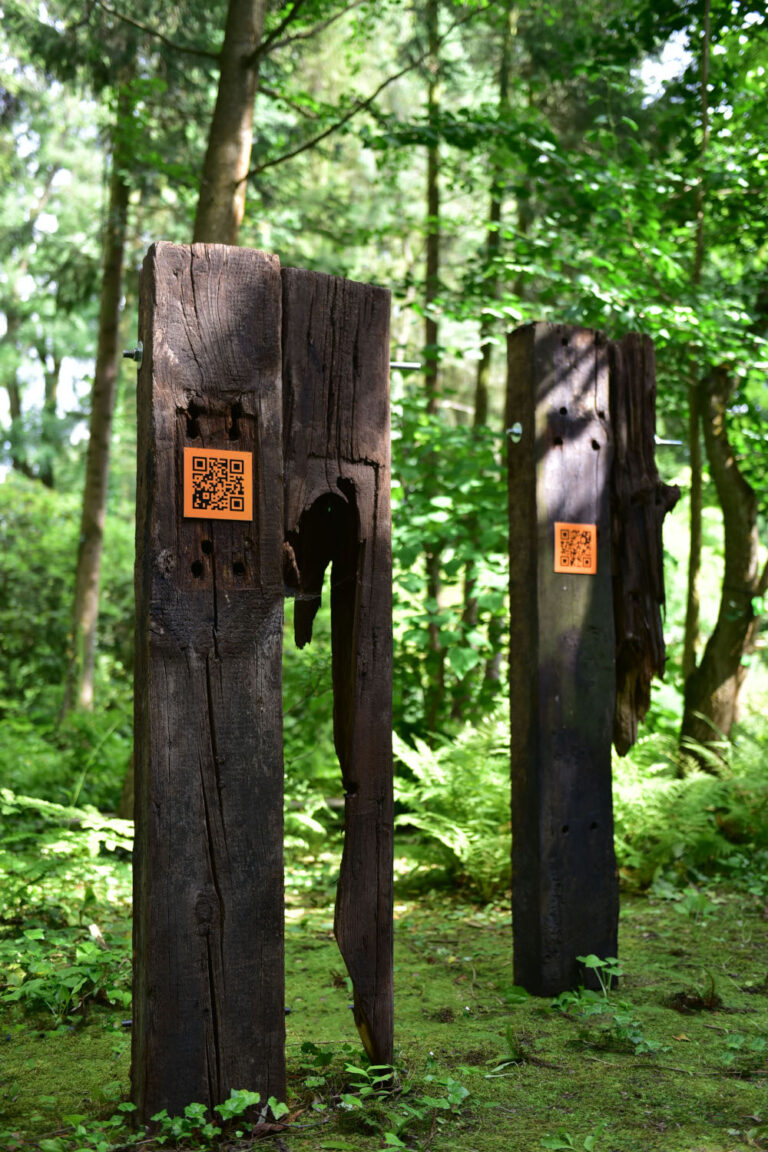V Land Art Festival, Bubel Stary, Poland, 2015.
MorePolish Melancholies
info
The Polish Melancholies series refers to historical traumas, symbols and national epics of my homeland.
„ Melancholy, (…) it houses the joy brought to half and is partly doomed to transform into existential sadness. (…) Melancholy is born with a particular failure, one or many of them. (…) The world of melancholy is divided into two different spaces: the upper, ideal and utopian, and lower, daily and mundane one.”
Josef Tischner, Chochol Sarmackiej melancholii [The Mulch in the Sarmatian Melancholy].
A white horse (Horse and the Polish Matter, 2015) is one of the indispensable elements of Polish artistic iconography dedicated to military successes and the fate of the country. White lime paint was used to disinfect traditional vision of patriotism and clear the field for a new context. As Kamila Leśniak wrote in “V Land Art Festival” catalogue: “Whiteness of the scenery is not the result of a simple paint, but lime used for disinfection, also corpses. This is an attempt to disenchant the myth, clear the field for the new content (…).
Borderline’s (2016) concept is based on hardly visible social classes’ battle and puts light on Polish farmer’s history. The work reflects on the nature of historically unstable idea of fraternizing peasants with the masters (“Wesele -The Wedding” by S. Wyspiański) and its contemporary issues: different visions of patriotism and service for their country. Farmers tools painted white and coated with fluorescent pigment and by night they become a surrealistic part of a theatric battle scene.
The work Swing, One Cannot Swing On (2016) denies freedom and joy associated with the act of swinging. Two swings, white and red (colors of the Polish flag) are facing each other, bumping against each other and provoking constant collisions.
Borderline Landscape
Szczere Pole Outdoor Gallery, Kryspinów, Poland, 2016
MoreSwing, One Cannot Swing On
VI Land Art Festival, Bubel Łukowiska, Poland, 2016.
MoreAbRh+/#D4213D
info
Installations ABRh+ and #D4213D (2010, 2011) research the intertwined relations between Polish countryside, patriotism and religion. #D4213D is a color code of the Polish flag redness. A red poppy flower is regarded to be a national flower of Poland. In literature the redness of poppy flowers is often symbolically associated with the shedding of blood in heroic and patriotic battles. Paper, handmade poppies appear as decoration of holly pictures in the Catholic chapels in the countryside. The flower (opium poppy) is known for its drug properties.
Natural/Unnatural
info
...
Selected outdoor works
info
...
Selected gallery works
info
...


















